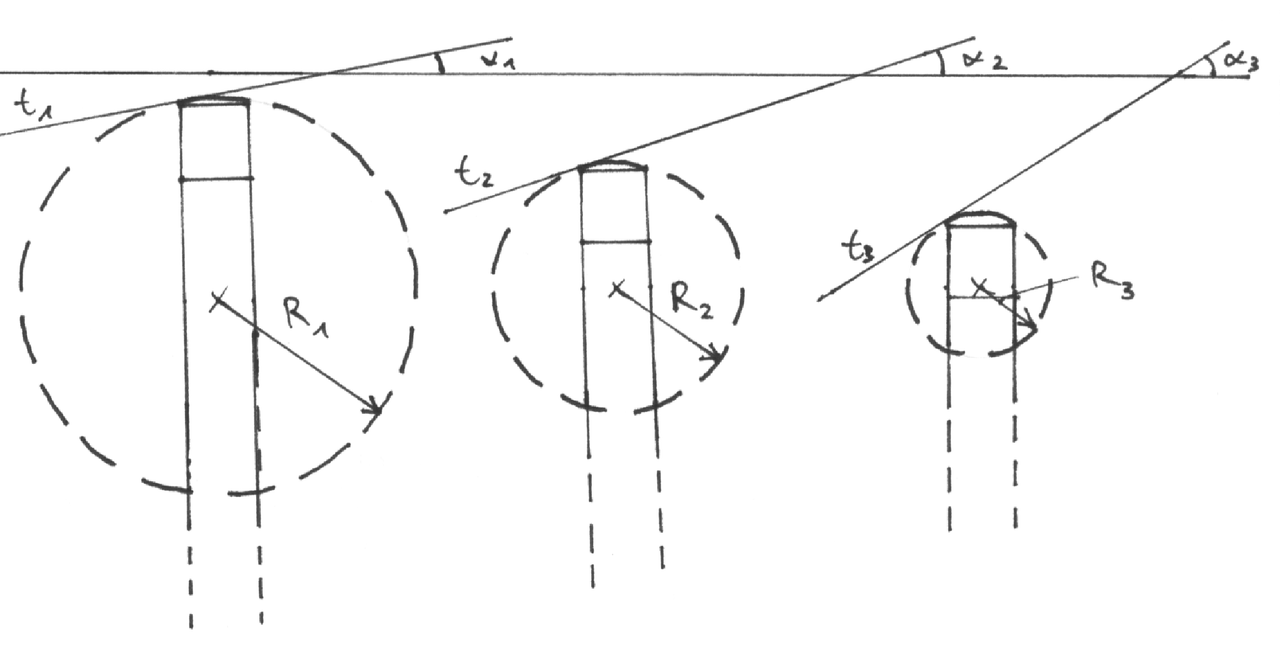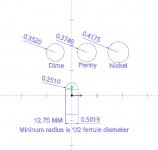(New to this.)
So, a nickel is 21mm in diameter and a dime is 18mm in diameter. (I thought it would be a bigger difference.) Tips range from 11mm to 14mm or so. 13mm is very common, maybe the most popular?
How does one decide on the tip radius they use? And why not just go hemispherical and trim your 13mm to a 6.5mm radius?
I can imagine some reasons not to. I guess that the larger the radius the less squirt you will get for a given offset from center of the cue ball. (But I really don't know.) But then, the larger the radius the less English one can apply? (Is that so, too?)
Thanks for your patience as I ponder this.
So, a nickel is 21mm in diameter and a dime is 18mm in diameter. (I thought it would be a bigger difference.) Tips range from 11mm to 14mm or so. 13mm is very common, maybe the most popular?
How does one decide on the tip radius they use? And why not just go hemispherical and trim your 13mm to a 6.5mm radius?
I can imagine some reasons not to. I guess that the larger the radius the less squirt you will get for a given offset from center of the cue ball. (But I really don't know.) But then, the larger the radius the less English one can apply? (Is that so, too?)
Thanks for your patience as I ponder this.

